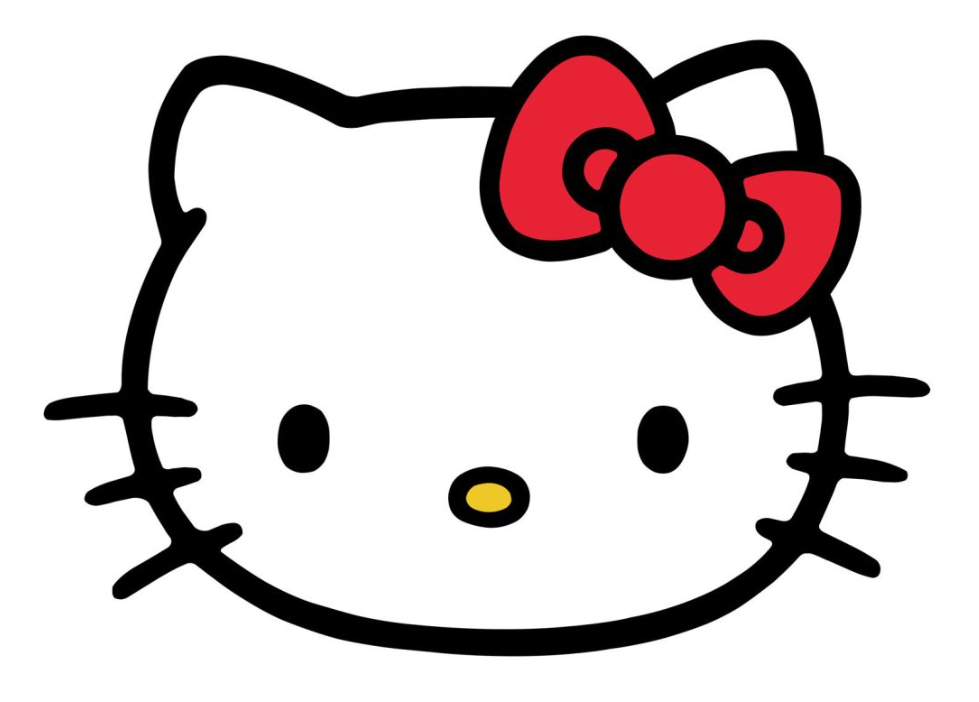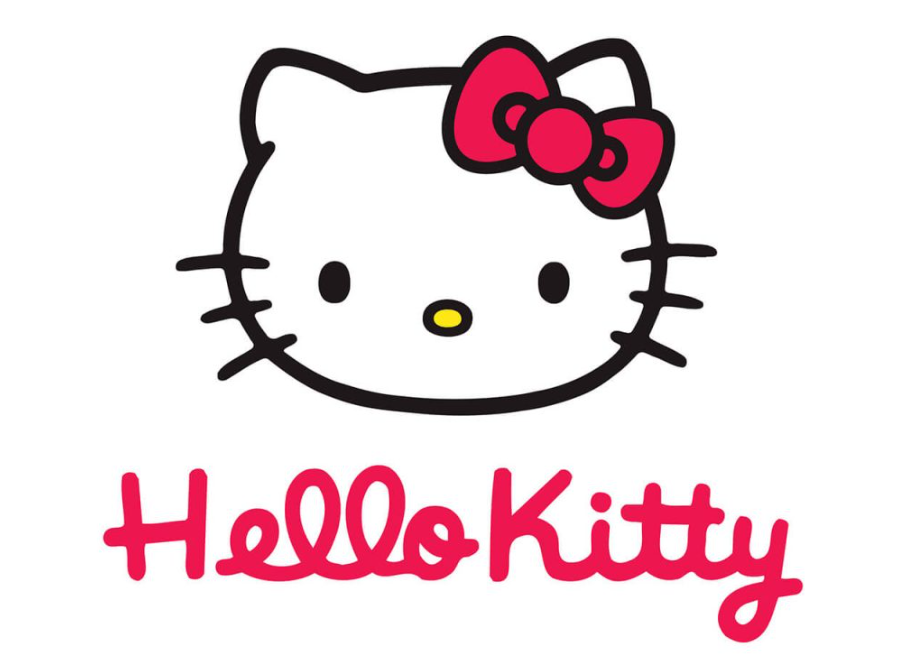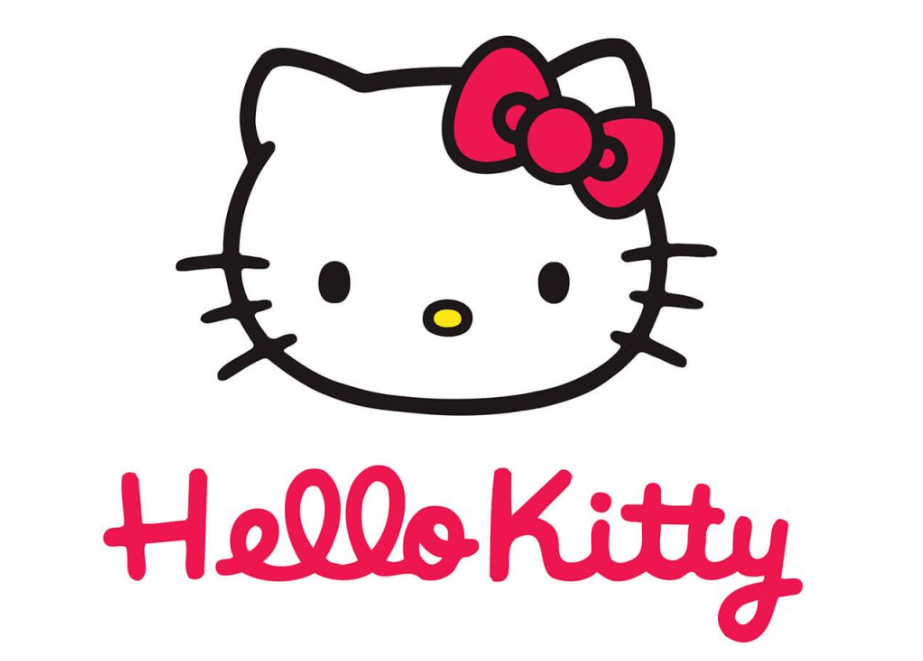Do you know that adorable character, Hello Kitty? She’s famous worldwide and people of all ages love her. Created by Yuko Shimizu and designed by Yuko Yamaguchi, Hello Kitty has captured thousands of hearts.
Hello Kitty is owned by the Japanese company Sanrio. The cartoon shows an adorable white cat with whiskers wearing a red bow. Hello Kitty has been demonstrated on products around the globe, from household items to toys, clothing, and accessories. There is slim chance you haven’t seen Hello Kitty at some point, whether on your TV or one of the numerous products she appears on.
You might recognize Hello Kitty by her iconic logo that stands out. The logo has become a symbol of Hello Kitty and the iconic brand and symbolizes kindness and playfulness.
2024 marks Hello Kitty’s 50th anniversary, so we thought there was no better time to look at the history behind this famous logo and all that it’s gone through to get to the iconic brand we see today. Let’s unpack everything about Hello Kitty from the history of the iconic logo to where it’s at today.
The Complete History Of The Hello Kitty Logo

1974––Today: The First Logo to Today
The Hello Kitty visual identity was composed in 1974 and hasn’t been touched since. Hello Kitty originally appeared in the Sanrio lineup in early 1974; at that time, she didn’t have a logo or name. It just appeared as an anthropomorphic bobtail that was wearing a red bow. Shortly after this, the visual identity was created; the logo is a kawaii-style image of a cat with an entire personality with just one headshot. The cat has black whiskers, a yellow nose, and the iconic red bow on its right ear. After its appearance, the character became increasingly popular, and soon, the artist Yuko Shimizu began to develop it even further. Shimizu created the character for the Japanese company Sanrio.

Hello Kitty started appearing in new poses, and she received a story that further depicted the character.
Typically, the famous logo is accompanied by a wordmark that comes in a variety of styles, from script cursive to customer sans serif typeface.
The wordmark also comes in various colors, from black to fuchsia pink.
The logo hasn’t been touched since its creation in 1974, and the original logo has stayed signature and tailored to the company ever since.
Every little girl in every inch of the globe can recognize this iconic and signature logo that has made a mark on everyone who has seen it.
Why No Mouth?

Many have been curious about why there is no mouth on Hello Kitty and wonder if it was done by mistake. Hello Kitty missing a mouth was actually intentional. Sanrio representatives said the mouth was left out of the image because the character didn’t express emotion.
They wanted Hello Kitty to be able to be perceived in a vast number of ways by everyone so she could be a versatile icon. However, it’s also been said that the absence of Hello Kitty’s mouth was so that it was seen that it doesn’t speak a specific language, and everyone can understand her regardless of where they are.
Even further, the creator of the character said that Hello Kitty does indeed have a mouth. It’s merely hidden behind her fur.
How Hello Kitty Went Global
Originating in Japan, Hello Kitty swiftly became a sensation among girls everywhere. Shimizu drew inspiration from the beloved Japanese concept of kawaii, which celebrates all things cute and endearing.
However, only two years after Hello Kitty was created, Sinrio began exporting the branded products overseas, where it quickly gained even more popularity.
Soon, Hello Kitty had expanded to Taiwan and South Korea, amongst other Asian countries. In 1983, Hello Kitty made her grand debut in the United States, and her fame skyrocketed. The key to her overwhelming success? Well, it’s all thanks to the endless array of products featuring her iconic image.
She wasn’t merely a child’s toy––she was shown on purses, children’s and adult clothing, car accessories, and even stationary. Everyone could use Hello Kitty, and due to this, everyone grew to love her.
What is The Hello Kitty Controversy?
It may seem that despite all the popularity surrounding Hello Kitty, there are still haters of the brand. This is true; over the years, there has been a fair amount of controversy surrounding Hello Kitty, and there remain haters today who dislike the brand and all surrounding it.
There was quite a stir over whether Hello Kitty was actually a cat or not. Some argued she was a British schoolgirl named Kitty White. This caused so much controversy because it was a new concept brought up after the brand had gained immense popularity, and the loyal fans who had always identified and believed she was a cat felt led astray.
Another controversy about Hello Kitty was the absence of her mouth. Despite the statement from Sanrio representatives and Shimizu, critics read into the lack of mouth shown on the character.
They said that this represented submissive behavior in women with the idea that they were unable to express themselves.
They believed it was a bad idea to impress young children invested in the character and that the character should have a mouth to represent one’s right to expression.
British or Japanese?
There’s often confusion about the origin of Hello Kitty and whether the white cat is British or Japanese. Despite Hello Kitty being created by a Japanese company, the cat has a fictional background where she is British.
She is said to have been born in London, and it’s believed that the reason for this is that at the time Hello Kitty was created, foreign countries were known to be trending in Japan. Yet, there’s some confusion regarding Hello Kitty’s origins.
Natsume Publications released a book featuring Hello Kitty residing in a Japanese-style home, surrounded by a family fluent in Japanese, further complicating the narrative. Although we can’t be sure about the origin because her story has many misleading elements, we know that wherever Hello Kitty is shown, she is sure to win hearts and make an impact.
Hello Kitty Today

Despite the ongoing debates about Hello Kitty’s true identity, she remains an adored icon across the globe. Her popularity continues to soar as she makes her way into the lives of new fans and graces an ever-expanding range of accessories. Hello Kitty has expanded her reach through collaborations with various brands, captivating an even broader audience.
There is even a Hello Kitty theme park in Vietnam, and we don’t see the brand planning to stop with its success anytime soon. When we think about the future of this brand and where it will be going forward, we don’t expect to see its popularity slow down anytime soon.
With every new person introduced to the iconic character, the beloved emblem displays a new fan falling in love. Without the iconic logo that displays the legendary character, we can be sure that Hello Kitty would not be as famous as she is today.













